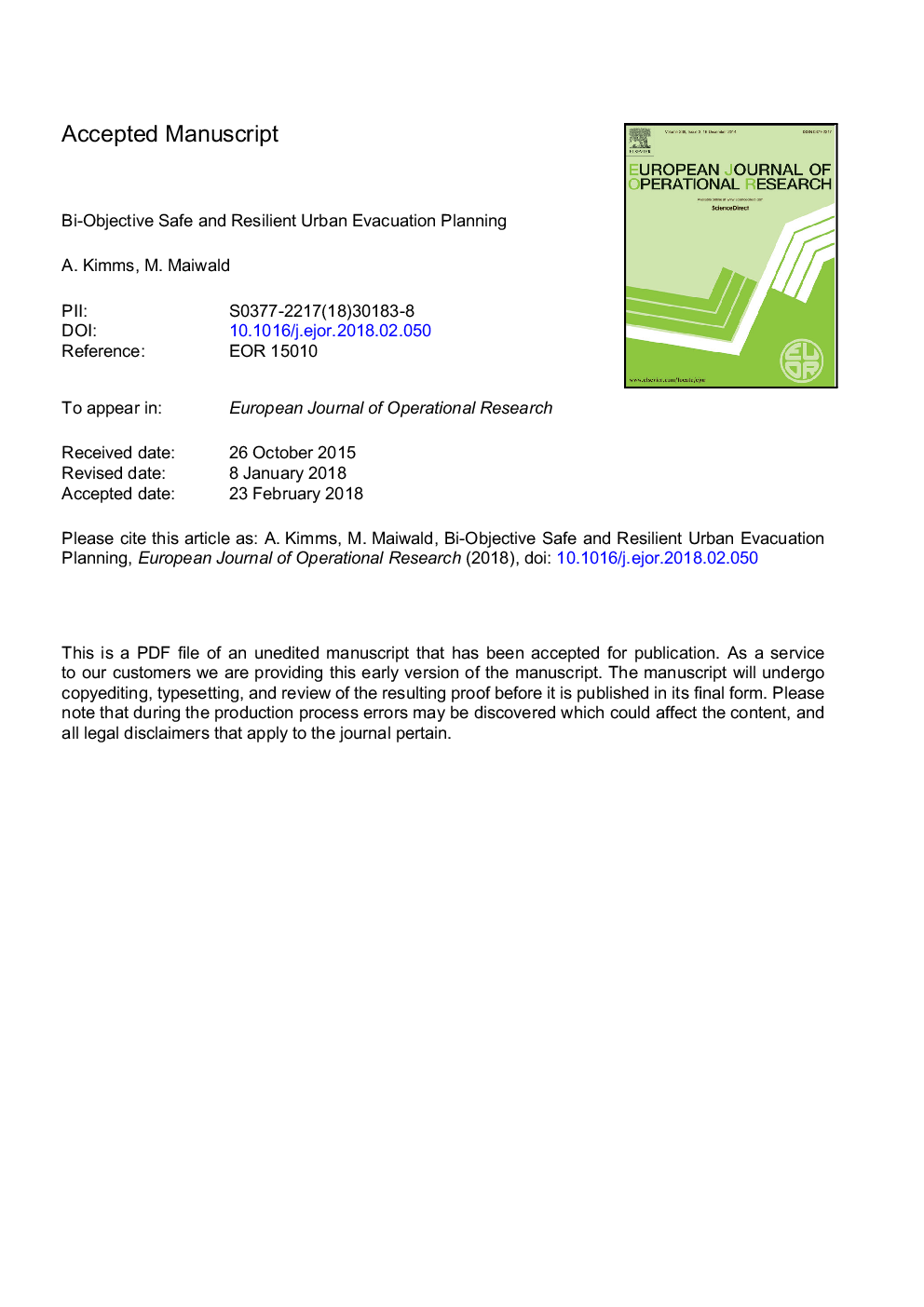| Article ID | Journal | Published Year | Pages | File Type |
|---|---|---|---|---|
| 6894697 | European Journal of Operational Research | 2018 | 39 Pages |
Abstract
We consider an urban evacuation scenario with the objective to minimize the overall hazard under various restrictions, e.g. rescuing all evacuees. The relevant parameters are generally assumed as deterministic, although such a situation is characterized by uniqueness and is subject to many uncertainties. We thus take uncertainties with respect to street capacities into account and introduce the aspect of resilience in the context of evacuation planning. This resilience aspect is implemented by utilizing the available street capacities in a more balanced way. For balancing the utilization of the street capacities, we accept a predetermined increase in the minimum hazard level. We present a new bi-objective path-based evacuation model based on the assumptions of the Cell-Transmission Model (CTM). We deal with the two conflicting objective functions by applying the ϵ-Constraint Method. Furthermore, we present a special path algorithm that generates the evacuation path in line with our special requirements. We verify the meaningfulness of our proposed idea of resilient evacuation planning in a computational study. Additionally, the study shows some interesting revelations e.g., the more street capacities are blocked, the greater the benefit of the new approach.
Related Topics
Physical Sciences and Engineering
Computer Science
Computer Science (General)
Authors
A. Kimms, M. Maiwald,
